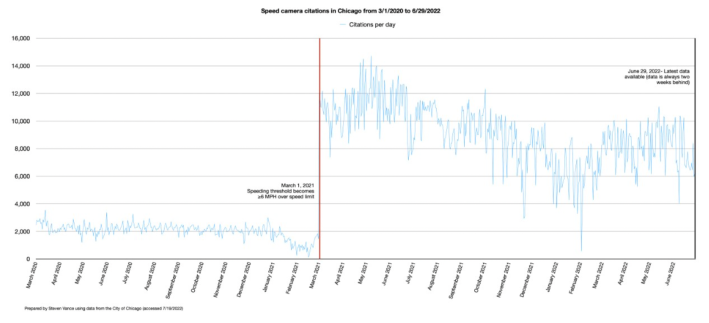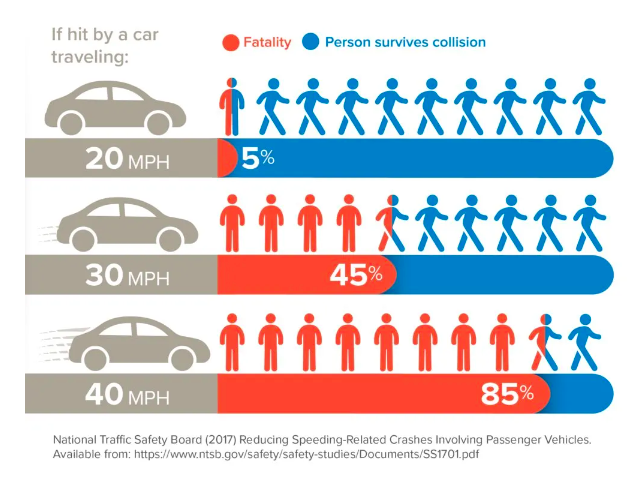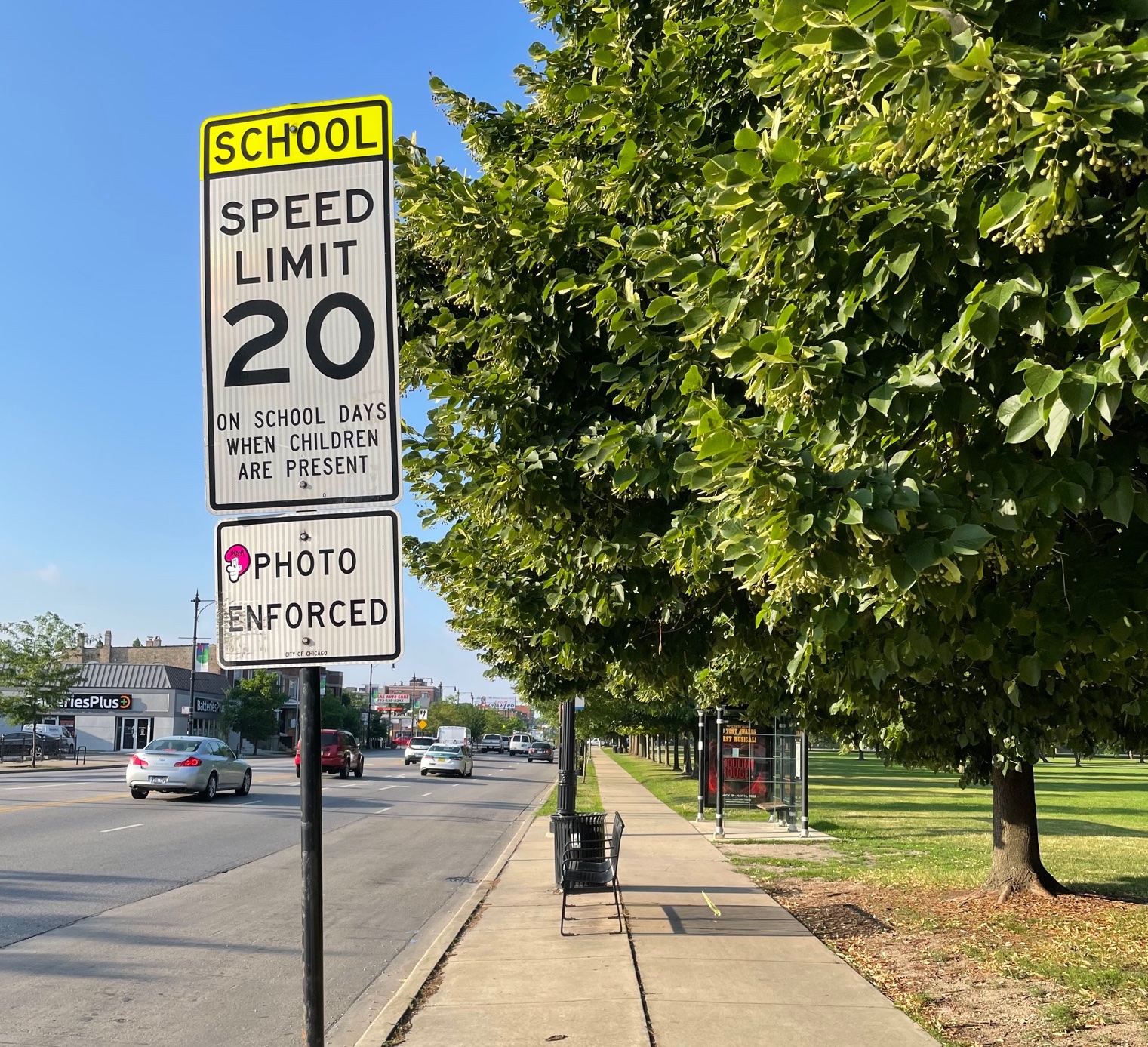Here are Streetsblog co-editor John Greenfield's prepared remarks for the public comment period of today's City Council meeting in advance of the vote on Ald. Anthony Beale's (9th) ordinance to raise the speed camera ticketing threshold from 6 mph to 10 mph.
Hi, I’m John Greenfield from Streetsblog Chicago. I'd like to discuss Alderman Beale’s ordinance to essentially legalize 9 mph speeding near parks and schools.
We know that Chicago speed cameras have been effective at preventing traffic injuries and deaths. A January 2022 University of Illinois at Chicago study found that from 2015-17 the cameras prevented a total of 204 injury and fatality crashes.
We also know that Black Chicagoans are killed in crashes at more than twice the rate of white residents.
In addition, we know that speed camera placement is reasonably fair. According to the study, the cameras aren't concentrated in African-American or Latino neighborhoods. And, contrary to what other news outlets have implied, a Streetsblog analysis found the cameras are distributed fairly in terms of road width.
However, the report found there were major racial discrepancies in who was recorded speeding, plus disparities in how fines and late fees impacted people of different income levels.
In response, four months after the study came out, the city launched the Clear Path program, which offers ticket debt forgiveness, and halves the cost of traffic fines for residents who make less than $41,000 a year, so a ticket for speeding by 6-10 mph is only $17.50. That's only a couple dollars more than the current Chicago minimum wage, generally $15.40.
Strangely, almost none of the media outlets who have covered this issue mentioned that 50 percent discount, which goes a long way to address legitimate equity concerns.
We know that Chicago's 6 mph speed camera threshold has been effective in reducing speeding by 6-9 mph. After an initial ticketing spike when the rule kicked in, the number of tickets issued has fallen steadily.

Federal studies found that people struck by motorists driving 30 mph, Chicago's default speed limit, usually survive. However those struck at 39 mph, which would be allowed in 30 zones under Alderman Beale's ordinance, almost always die.

Voting to allow deadly speeds would be particularly wrongheaded during the current nationwide spike in traffic fatalities, which has been exacerbated in Chicago by factors like the car theft epidemic. This issue really hit home for me earlier this month when Hannah Hayes, a writer, teacher, and activist who campaigned for Harold Washington, whose husband is a relative of mine, was killed in Bronzeville by the driver of a stolen car, who fled the scene.
And it would be downright irresponsible for alderpersons to send a message to motorists that breaking the speed limit by 9 mph is no big deal, in light of the fact speeding and negligent drivers struck and killed four Chicago children last month.

City Council members, I ask you to do the right thing and vote no on the ordinance to allow deadly speeds near schools and parks. Thanks for your consideration.





